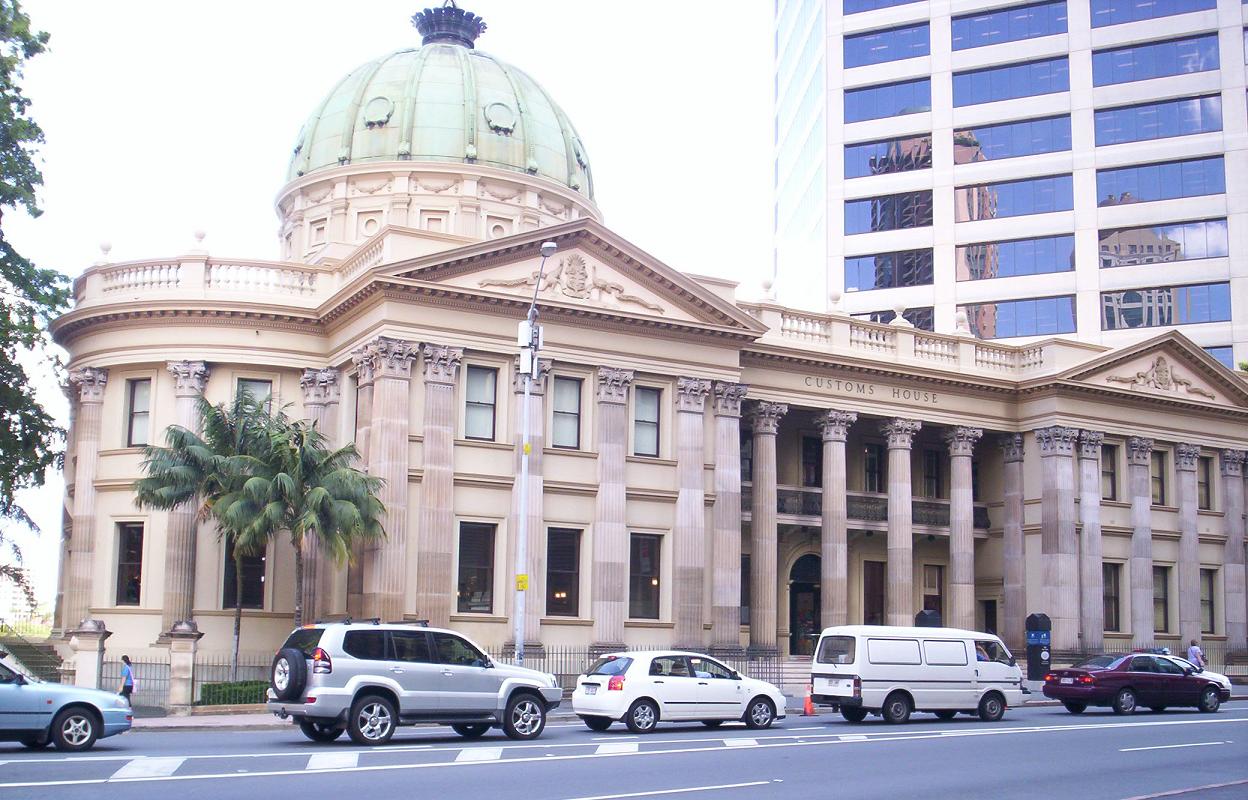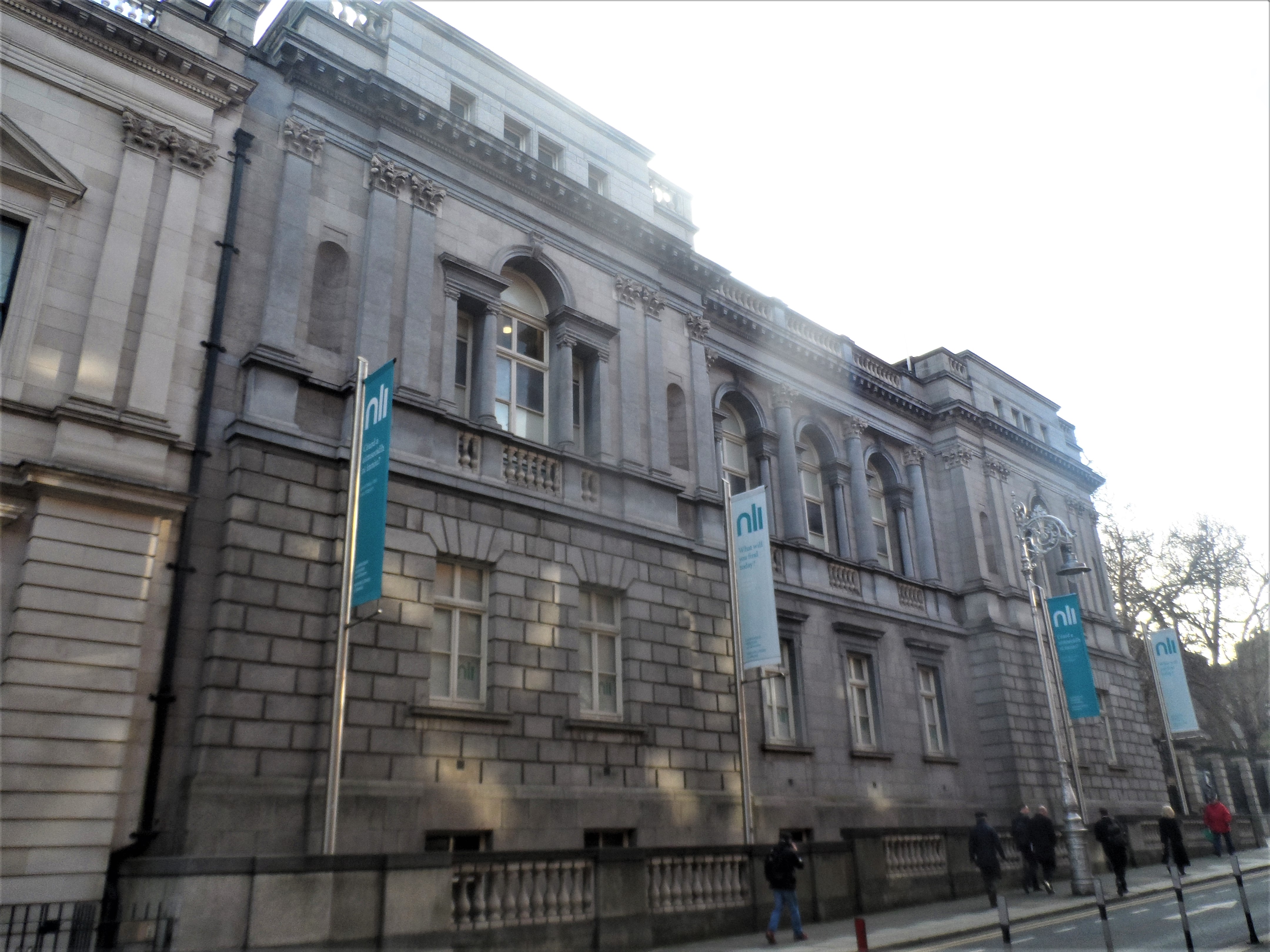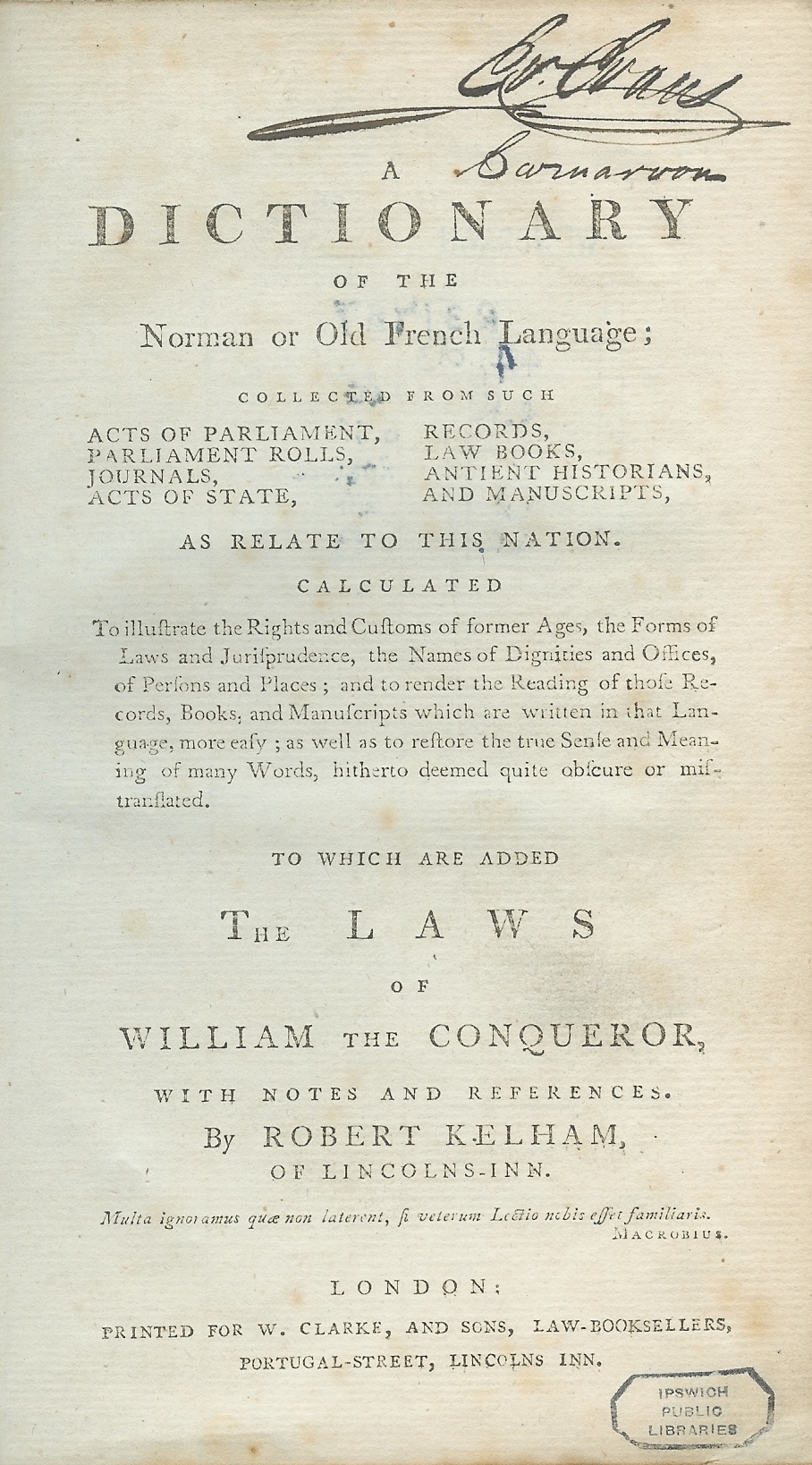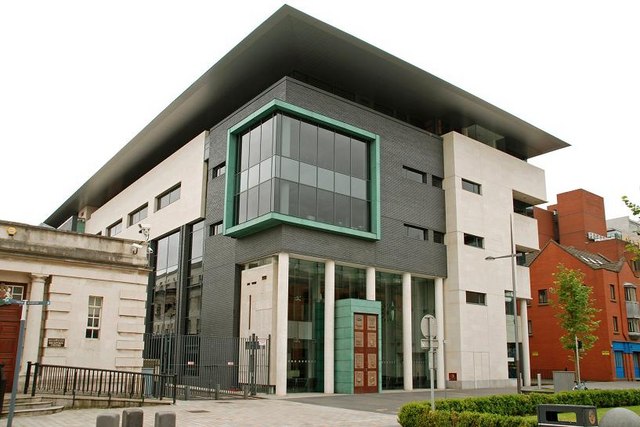|
John Estrete
John Estrete, or Strete (died c.1491) was an Irish judge, author, law lecturer and statesman of the late fifteenth century. He held the offices of King's Serjeant, Deputy Chief Baron of the Irish Exchequer, and Master of the Coinage of Ireland. He was a member of the Privy Council of Ireland.Ball, F. Elrington ''The Judges in Ireland 1221–1921'' John Murray London 1926 Vol.1 p.187 He wrote at least one legal textbook,'' Natura Brevium''. He was a supporter of Gerald FitzGerald, 8th Earl of Kildare, who was almost all-powerful in Ireland for many years and was prepared to defy the English Crown on occasion. Despite his close connection to Kildare, Estrete in time gained the confidence of the English Crown, and acted as an intermediary between the Crown and Kildare, notably during the rebellion of Lambert Simnel in 1487.Ball p.107 Family The Estrete (or Strete) family were prosperous citizens of fifteenth-century Dublin, who later acquired lands in Louth and Meath. The nam ... [...More Info...] [...Related Items...] OR: [Wikipedia] [Google] [Baidu] |
Serjeant-at-law (Ireland)
This is a list of lawyers who held the rank of serjeant-at-law at the Irish Bar. Origins of the office of serjeant The first recorded serjeant was Roger Owen, who was appointed between 1261 and 1266, although the title itself was not commonly used in Ireland until about 1388; the earlier terms were "serviens", "King's Narrator" or "King's Pleader". The term Pleader was still in use in the 1470s. However, there is a reference to Richard le Blond as the King's "Serjeant pleader" in 1305 or 1306. In the early years of the office, appointment as serjeant might be temporary and might cover only a part of the country, although John de Neville was acting as Serjeant in 1295-6 "for all parts of Ireland". As a rule, they were licensed to appear in all of the Royal Courts, although John Haire in 1392 was described as "Serjeant-at-law of our Lord the King in the Common Pleas". The serjeant's duties were numerous and varied.Casey p.8 Early serjeants spent much time suing to recover Roya ... [...More Info...] [...Related Items...] OR: [Wikipedia] [Google] [Baidu] |
Custom House
A custom house or customs house was traditionally a building housing the offices for a jurisdictional government whose officials oversaw the functions associated with importing and exporting goods into and out of a country, such as collecting customs duty on imported goods. A custom house was typically located in a seaport or in a city on a major river, with access to an ocean. These cities acted as ports of entry into a country. Due to advances in electronic information systems, the increased volume of international trade, and the introduction of air travel, the term "custom house" became a historical anachronism. There are many examples of buildings around the world that were formerly used as custom houses but have since been converted for other uses, such as museums or civic buildings. As examples, the former Alexander Hamilton U.S. Custom House in Manhattan, New York, (now the George Gustav Heye Center) presently houses a branch of the National Museum of the American Indi ... [...More Info...] [...Related Items...] OR: [Wikipedia] [Google] [Baidu] |
Lambert Simnel, Pretender To The English Throne, Riding On Supporters In Ireland
Lambert may refer to People *Lambert (name), a given name and surname * Lambert, Bishop of Ostia (c. 1036–1130), became Pope Honorius II *Lambert, Margrave of Tuscany ( fl. 929–931), also count and duke of Lucca *Lambert (pianist), stage-name of German pianist and composer Paul Lambert Places United States *Lambert, Mississippi, a town *Lambert, Missouri, a village *St. Louis Lambert International Airport, St. Louis, Missouri *Lambert, Montana, a rural town in Montana *Lambert, Oklahoma, a town *Lambert Township, Red Lake County, Minnesota *Lambert Castle, a mansion in Paterson, New Jersey *Lambert Creek, San Mateo County, California Elsewhere * Lambert Gravitational Centre, the geographical centre of Australia *Lambert (lunar crater), named after Johann Heinrich Lambert *Lambert (Martian crater), named after Johann Heinrich Lambert Transportation *Lambert (automobile), a defunct American automobile brand *Lambert (cyclecar), British three-wheeled cyclecar *''Lambert'', one ... [...More Info...] [...Related Items...] OR: [Wikipedia] [Google] [Baidu] |
National Library Of Ireland
The National Library of Ireland (NLI; ga, Leabharlann Náisiúnta na hÉireann) is the Republic of Ireland's national library located in Dublin, in a building designed by Thomas Newenham Deane. The mission of the National Library of Ireland is 'To collect, preserve, promote and make accessible the documentary and intellectual record of the life of Ireland and to contribute to the provision of access to the larger universe of recorded knowledge.' The library is a reference library and, as such, does not lend. It has a large quantity of Irish and Irish-related material which can be consulted without charge; this includes books, maps, manuscripts, music, newspapers, periodicals and photographs. Included in their collections is material issued by private as well as government publishers. The Chief Herald of Ireland and National Photographic Archive are attached to the library. The library holds Art exhibition, exhibitions and holds an archive of List of Irish newspapers, Irish ne ... [...More Info...] [...Related Items...] OR: [Wikipedia] [Google] [Baidu] |
Lord Deputy Of Ireland
The Lord Deputy was the representative of the monarch and head of the Irish executive (government), executive under English rule, during the Lordship of Ireland and then the Kingdom of Ireland. He deputised prior to 1523 for the Viceroy of Ireland. The plural form is ''Lords Deputy''. List of Lords Deputy Lordship of Ireland *Sir Thomas de la Dale (1365-1366) *Sir Thomas Mortimer (1382–1383) *Thomas FitzGerald, 7th Earl of Kildare (1454–1459) *William Sherwood (bishop), William Sherwood (1462) *Thomas FitzGerald, 7th Earl of Desmond (1463–1467) *John Tiptoft, 1st Earl of Worcester (1467–1468) *Thomas FitzGerald, 7th Earl of Kildare (1468–1475) *William Sherwood (bishop), William Sherwood (1475–1477) *Gerald FitzGerald, 8th Earl of Kildare (1477) *Henry Grey, 4th (7th) Baron Grey of Codnor (1478–1479) *Gerald FitzGerald, 8th Earl of Kildare (1479–?1494) *Walter Fitzsimon, Archbishop of Dublin (Roman Catholic), Archbishop of Dublin (1492) *Robert Preston, 1st Visc ... [...More Info...] [...Related Items...] OR: [Wikipedia] [Google] [Baidu] |
Richard III Of England
Richard III (2 October 145222 August 1485) was King of England and Lord of Ireland from 26 June 1483 until his death in 1485. He was the last king of the House of York and the last of the Plantagenet dynasty. His defeat and death at the Battle of Bosworth Field, the last decisive battle of the Wars of the Roses, marked the end of the Middle Ages in England. Richard was created Duke of Gloucester in 1461 after the accession of his brother King Edward IV. In 1472, he married Anne Neville, daughter of Richard Neville, 16th Earl of Warwick. He governed northern England during Edward's reign, and played a role in the invasion of Scotland in 1482. When Edward IV died in April 1483, Richard was named Lord Protector of the realm for Edward's eldest son and successor, the 12-year-old Edward V. Arrangements were made for Edward V's coronation on 22 June 1483. Before the king could be crowned, the marriage of his parents was declared bigamous and therefore invalid. Now officially i ... [...More Info...] [...Related Items...] OR: [Wikipedia] [Google] [Baidu] |
Edward IV Of England
Edward IV (28 April 1442 – 9 April 1483) was King of England from 4 March 1461 to 3 October 1470, then again from 11 April 1471 until his death in 1483. He was a central figure in the Wars of the Roses, a series of civil wars in England fought between the Yorkist and House of Lancaster, Lancastrian factions between 1455 and 1487. Edward inherited the House of York, Yorkist claim when his father, Richard, Duke of York, died at the Battle of Wakefield in December 1460. After defeating Lancastrian armies at Mortimer's Cross and Battle of Towton, Towton in early 1461, he deposed King Henry VI and took the throne. His marriage to Elizabeth Woodville in 1464 led to conflict with his chief advisor, Richard Neville, Earl of Warwick, known as the "Kingmaker". In 1470, a revolt led by Warwick and Edward's brother George, Duke of Clarence, briefly Readeption of Henry VI, re-installed Henry VI. Edward fled to Flanders, where he gathered support and invaded England in March 1471; ... [...More Info...] [...Related Items...] OR: [Wikipedia] [Google] [Baidu] |
King Richard III From NPG
King is the title given to a male monarch in a variety of contexts. The female equivalent is queen, which title is also given to the consort of a king. *In the context of prehistory, antiquity and contemporary indigenous peoples, the title may refer to tribal kingship. Germanic kingship is cognate with Indo-European traditions of tribal rulership (c.f. Indic ''rājan'', Gothic ''reiks'', and Old Irish ''rí'', etc.). *In the context of classical antiquity, king may translate in Latin as '' rex'' and in Greek as '' archon'' or '' basileus''. *In classical European feudalism, the title of ''king'' as the ruler of a ''kingdom'' is understood to be the highest rank in the feudal order, potentially subject, at least nominally, only to an emperor (harking back to the client kings of the Roman Republic and Roman Empire). *In a modern context, the title may refer to the ruler of one of a number of modern monarchies (either absolute or constitutional). The title of ''king'' is us ... [...More Info...] [...Related Items...] OR: [Wikipedia] [Google] [Baidu] |
Law French
Law French ( nrf, Louai Français, enm, Lawe Frensch) is an archaic language originally based on Old Norman and Anglo-Norman, but increasingly influenced by Parisian French and, later, English. It was used in the law courts of England, beginning with the Norman conquest of England in 1066. Its use continued for several centuries in the courts of England and Wales and Ireland. Although Law French as a narrative legal language is obsolete, many individual Law French terms continue to be used by lawyers and judges in common law jurisdictions (see the section "Survivals in modern legal terminology", below). History The earliest known documents in which ''French'' (i.e. Anglo-Norman) is used for discourse on English law date from the third quarter of the thirteenth century and include two particular documents. The first is '' The Provisions of Oxford'' (1258), consisting of the terms of oaths sworn by the 24 magnates appointed to rectify abuses in the administration of King H ... [...More Info...] [...Related Items...] OR: [Wikipedia] [Google] [Baidu] |
William Darcy (died 1540)
Sir William Darcy (c.1460–1540) was a leading Anglo-Irish statesman of the Pale in the early sixteenth century; for many years he held the office of Vice-Treasurer of Ireland. He wrote an influential treatise, ''The Decay of Ireland'', which led to his being called "the father of the movement for political reformation in Ireland".Lennon, Colm ''Sixteenth-century Ireland-the Incomplete Conquest'' Gill and Macmillan Dublin 1994 p.79 He was a colourful and flamboyant character, whose exceptional height gave rise to his nickname "Great Darcy".Ellis, Stephen G. "Darcy, Sir William" ''Dictionary of Irish Biography'' Cambridge University Press Background and early career He was born at Platten in County Meath, son of John Darcy IV of Platten and his wife Elizabeth Plunkett, daughter of Christopher Plunkett, 2nd Baron Killeen and Elizabeth Welles.Lodge, John and Archdall, Mervyn ''The Peerage of Ireland'' Dublin 1789 Vol.1 p.122 The Darcys of Platten were a junior branch of the family ... [...More Info...] [...Related Items...] OR: [Wikipedia] [Google] [Baidu] |
Inns Of Court
The Inns of Court in London are the professional associations for barristers in England and Wales. There are four Inns of Court – Gray's Inn, Lincoln's Inn, Inner Temple and Middle Temple. All barristers must belong to one of them. They have supervisory and disciplinary functions over their members. The Inns also provide libraries, dining facilities and professional accommodation. Each also has a church or chapel attached to it and is a self-contained precinct where barristers traditionally train and practise, although growth in the legal profession, together with a desire to practise from more modern accommodations and buildings with lower rents, caused many barristers' chambers to move outside the precincts of the Inns of Court in the late 20th century. History During the 12th and early 13th centuries, law was taught in the City of London, primarily by the clergy. But a papal bull in 1218 prohibited the clergy from practising in the secular courts (where the English common ... [...More Info...] [...Related Items...] OR: [Wikipedia] [Google] [Baidu] |
Irish Bar
The Bar of Ireland ( ga, Barra na hÉireann) is the professional association of barristers for Ireland, with over 2,000 members. It is based in the Law Library, with premises in Dublin and Cork. It is governed by the General Council of the Bar of Ireland, which was established in 1897. The Council is composed of twenty-five members: twenty who are elected, four co-opted, and the Attorney-General of Ireland, Attorney-General, who holds office ''ex officio''. Every year, ten members are elected for two-year terms; five by senior counsel and five by junior counsel. The Bar of Ireland funds the Law Library, which has premises in Dublin in the Four Courts, Church Street, and the Criminal Courts of Justice (Dublin), Criminal Courts of Justice, and also a smaller library in Cork (city), Cork. Nearly all barristers practicing in Ireland are members of the Law Library, which is often used as a metonym for the Irish barrister profession itself. Before the creation of the Bar of Ireland ... [...More Info...] [...Related Items...] OR: [Wikipedia] [Google] [Baidu] |








